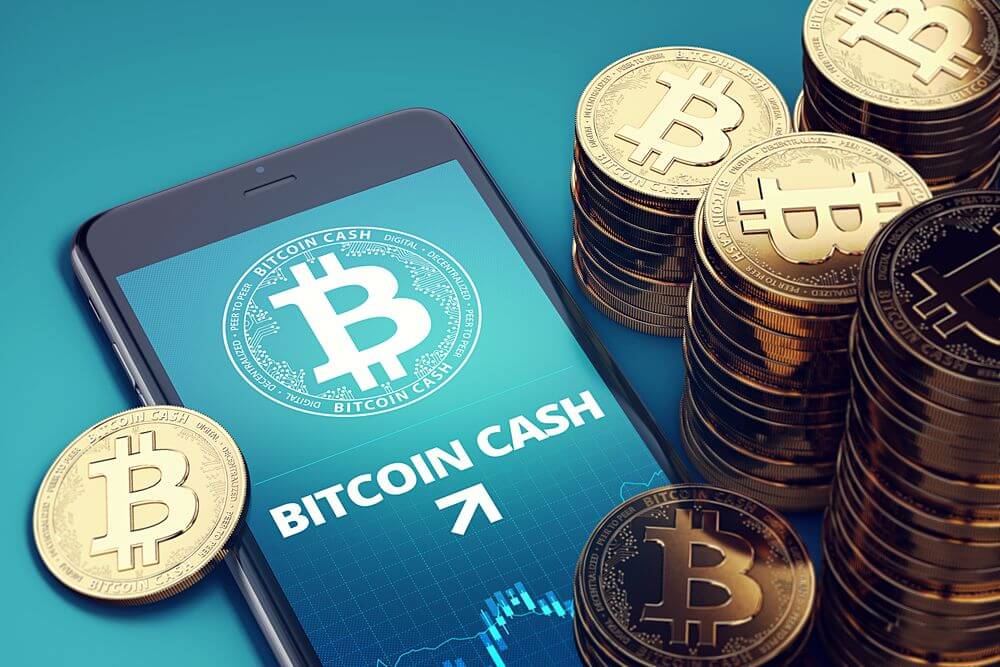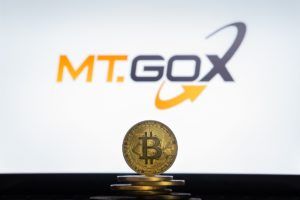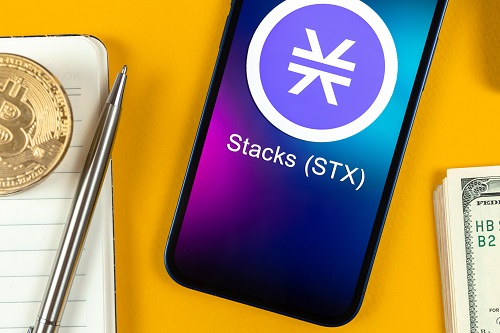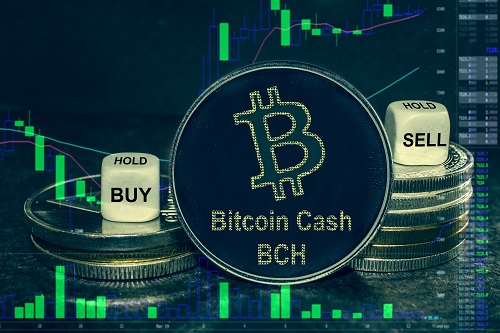How to Mine Bitcoin Cash In 2025
Mining is how cryptocurrencies not only secure their network but also create new coins. This is done through solving complex computations to show proof that the miners have actually worked on it, hence the name Proof of Work (PoW). Bitcoin Cash, a fork of the original Bitcoin blockchain, uses PoW, and its miners play a critical role. Mining can be done by using your own computers or joining a pool of other miners to consolidate computing power in order to achieve greater success.
Breaking Down Bitcoin Cash Mining
This tutorial will explain in detail how you can start mining Bitcoin Cash. Before we start mining, however, you will need to understand a few basic things about mining itself.
What is Bitcoin Cash Mining?
Traditionally, the flow of money has been controlled by two entities: the government-controlled central bank that issues the new units of currency, and regular banks that send and receive money on your behalf in your accounts. Acting as authorities and intermediaries, they have total control over the movement of money. Central banks can create as many bills and coins as they see fit, creating inflation, while other banks can block your transactions and even suspend your accounts, taking your finances hostage.
Bitcoin Cash (BCH) is a cryptocurrency that works on the belief that an individual should be in complete control of his or her money, and that no other party should have a say in the storage or usage of these funds. Mining is a process through which all transactions are validated, stripping retail banks of their power as arbitrators of transactions.
Miners have complete copies of ledgers with them and they update these in batches, called blocks. These blocks are then propagated on the network for other miners to update their ledgers. The blocks are created through solving cryptographic problems using computing power, which is a digital equivalent of putting in the effort to physically mine a resource, hence the term miners. Just as real-world physical mining results in the miner finding the asset, Bitcoin Cash miners are rewarded with newly minted BCH coins. This accounts for currency issuance, thereby obsolescing central banks too.
Why are Bitcoin Cash Miners Important?
As explained in the start, miners of Bitcoin Cash are the backbone of the network as they not only update the ledger but ensure the security of the whole system. Before modern cryptocurrencies came into existence, previous attempts failed due to “double-spend” issues, which would allow participants to use their digital currency twice in two different transactions. Both receivers would get their money, with the second one duplicated. The creation of more money out of thin air would erode the whole setup.
To make sure that this doesn’t happen, each and every transaction has to be validated by the miners before it is received by the other party. A validated transaction is ‘hashed’, or coded in the blockchain, and floated on the network for other miners to update their records in batches of blocks. Once the transaction is confirmed, the amount is deducted from the sender’s wallet and credited to the receiver’s. The updated ledger gives every miner the same information and therefore, using the same coins twice is not possible.
In order to ensure that miners are also sincere and do not cheat the Bitcoin Cash network, they must prove that they have actually worked for it. This is achieved by them solving mathematical puzzles under the Proof of Work (PoW) consensus. Since the miners spend electrical energy and time to solve the puzzles (known as hashes), they are compensated with block rewards and the associated transaction fees. The computing power of Bitcoin Cash is measured in hashes per second. The more miners and computing power are dedicated to the network, the higher the hashrate. To ensure that competition remains tough, BCH adjusts the complexity of the math problems as more miners and power is added, at the same time reducing it in case miners leave the network. This keeps the time it takes to verify a block constant.
Bitcoin Cash Mining Limitations
Bitcoin Cash is a fork of the original Bitcoin network. During the late spring of 2017, Bitcoin was facing scalability issues. With its popularity rising, the whole blockchain was under load. With a size ceiling of 1MB per block, the number of transactions that could be noted in each block was too low for the network to maintain its speed. A disagreement arose in the developer community on how to address this problem. One group wanted to increase the block size limit to 8MB. With the two camps not reconciling, they parted ways, with Bitcoin Cash beginning its own chapter of the blockchain with a larger block size, which has since increased to 32MB now.
Apart from the block size, Bitcoin Cash has all the mining limitations of its parent Bitcoin chain. It is deflationary, with 21 million coins that can ever be created, and retains the 10 minute block production time. BCH uses the same SHA-256 hashing algorithm, too. The reward also is halved every four years roughly, with a 6.25 BCH block reward for miners today. The 10 minute block production time is ensured through variable mining difficulty: when more hashpower is committed, the mathematical puzzles increase in complexity to reduce time back to the 10-minute interval. Similarly, if the hashrate falls, the equations are made easier to maintain the block creation time.
Tip to Mine Bitcoin Cash Efficiently for Greater Profits
With mining basics understood, you can start your own Bitcoin Cash mining operation. Considering the hashrate of BCH these days, solo mining is only going to be profitable if you have a very large budget and can buy multiple machines to work together, combining power. Using smaller machines, even if powerful, is not feasible anymore. The electrical consumption of the mining rigs and the cooling systems would be extremely high and it is unlikely you would be able to successfully get a block reward, given the total hash power of the network. The best option is to join a Bitcoin Cash mining pool or use cloud mining solutions.
Technical Aspects of Mining Bitcoin Cash
To mine Bitcoin Cash profitability, you must first understand what hashrate is and how it can affect your ability to mine.
Hashrate Simplified for Bitcoin Cash
- What Does Hashrate Mean?
Hashrate is the ability or computing power that can solve the mathematical puzzles required to find a block. The hashrate of a blockchain network reflects the total computing power that is being dedicated to the ecosystem. It is measured as the number of hashes being performed every second (h/s).
- Why is a Higher Hashrate Important?
A higher hashrate means your mining machines have more computing power and therefore, a greater chance at solving the equations and obtaining the rewards for successfully mining a block. With more computers and miners joining the network, the total hashpower will increase. Bitcoin Cash’s code will compensate for the higher hashrate and adjust the mining difficulty so that blocks are still created at an average of 10 minutes and vice versa.
The hashrate can also be interpreted as the health of the BCH network. Decentralisation means that no one entity or group can take over the network. To do so would require having control over a majority of the power. This is called a 51% attack. With higher hashrates, it is more difficult for a breach in the security, as it becomes highly impractical to co-opt 51% of the hash rate due to increasing hardware and running costs.
- How is Hashrate Measured?
Like all measures of anything related to computers, the hashrate is measured in multiples of 1024 per second, namely kilohashes/s, megahashes/s, terahashes/second and so forth. Bitcoin Cash is roughly at 1.6 exahashes/s (1.6 Eh/s), meaning the miners are calculating 1.6 quintillion calculations per second.
Processing Power: CPU & GPU
In the early days of Bitcoin mining not many computers were mining and it was possible to mine with normal desktops and laptops using the available CPU power. Later on, people realised that their graphics cards, or GPUs, were more powerful than CPUs and they started to develop mining software for these.
As time went on though, more and more development occurred in the mining community, and miners started using Field Programmable Gate Arrays (FPGAs) and dedicated computing rigs called ASICs (Application Specific Integrated Circuits) in order to maximise mining performance and efficiency. This is the case for BCH and has resulted in astronomical hashpower for the network. This means that in order to reasonably compete for block rewards, individual miners need a very high hashrate.
Hashrate Needed to Mine Bitcoin Cash Profitably
![]()
Source: CoinWarz.com
Even at its lowest hashrate, the Bitcoin Cash network never fell below 185 petahash/s rates. ASICs, with the highest hash power, have always been the only way to mine BCH, as it forked from Bitcoin’s original chain after ASICs had asserted their dominance. Pool or cloud mining options have their own intricacies too, and you must be very careful in selecting the right option, lest you run up losses.
Pros and Cons of Mining Bitcoin Cash
Pros
- Block rewards can be very profitable and as a miner, you can make good money
- Rewards for successfully mining are also complemented by the transaction fees
- A good mining pool selection can boost your chances of block rewards
- The Bitcoin Cash network is secured by your mining endeavours
- Outdated ASICs can still be sold second-hand, as the demand exists for other networks
Cons
- A high hashrate means you may encounter losses if you can’t compete
- ASICs require a heavy power supply, jacking up your bill
- Pools can lower your reward as it is distributed among members
DIY Bitcoin Cash Mining - How to Get Started
Now you have a fair idea of what mining is, including its technical points such as hashrate, you can start your own Bitcoin Cash mining project. If you are interested in mining through ASICs, either as a stand-alone miner or by joining a pool, you should know what rig is most suitable for you.
Best Mining Hardware for Bitcoin Cash
While deciding to select the hardware you want to mine Bitcoin Cash, you should try to get your hands on the most powerful machines as they provide more chances of successfully finding a block and gaining the rewards. However, there are other factors such as the initial investment, cooling requirements, and your electrical rate that you must take into consideration. Here are some mining machines that you might find interesting.
For a beginner who isn’t ready to invest heavily, you can check out the Avalon6, going for around $650 on Amazon. The machine isn’t very powerful compared to the others on the market, pumping 3.5 Th/s and consuming 1kW of electricity every hour.
If you think the Avalon6 might not be suitable for you, you can check out the DragonMint T1. It is a more modern ASIC that can give you as high as 16 Th/s but consumes much more power. The DragonMint T1 is an expensive machine and the 4.5x increase in power over the Avalon6 translates into nearly three and a half times in cost, going for $2767 on the market. The machine is much higher in demand and you might have to wait for a while before you actually get your hands on one as it has a long waiting list.
You can go all-out on a mining rig by buying the Antminer S19 Pro, perhaps the most powerful Bitcoin Cash mining ASIC. This hashrate beast churns an astounding 110 Th/s. The higher power comes with a higher price tag, with the S19 Pro fetching $3770.
There are many other mining machines on the market in between these three. You can check out their hashrates and energy consumption. Use a good mining calculator (there are many available online for free) to input data including your utility rates to find out which machine will have the highest chances of giving you profits.
Other Costs to be Considered
There are a number of costs associated with the ASIC miners. First and foremost, you must understand that machines like these are sold as stand-alone units and many don’t even come with power supplies. The S1 Pro’s power supply can add as much as $150 to your investment.
Your location is another important factor. First what you must check is how much your electrical company is charging you. Western countries tend to have higher rates and places like China have the lowest. Secondly, your storage and cooling come into play. Urban areas are warmer and this can equate to more cooling requirements. Cooler climates can help drastically cut down on this cost, but then again this can be offset if you buy bigger machines that have heavier fans.
Most probably you are going to join a mining pool, so also check out their physical locations. Cheaper to run, they will affect your mining contribution and give you higher payouts.
Mining Solution/Services
For people who still want to mine but find the initial investment of owning and running ASIC miners out of budget, they have another option: cloud mining. In cloud mining, you rent out computing power from another person or group, paying on a monthly (or weekly/daily) basis. You buy a contract for a predetermined time period and the ASIC owner does all the mining for you. The contract includes all the necessary rights and access to rewards you might expect.
CCG is one of the most popular cloud mining contract providers. It provides the highest hashrate and offers a choice of contracts to suit different aims and budgets.
You can buy your own hardware if you do want to mine for yourself, but the exa hashrates of BCH mean you will probably never make any profit if you only have a few mining machines to hand. The best solution for miners today is to get together and pool their computing power, hence the name pool mining.
The combined power gives you the advantage of getting rewards as the higher hashrate of the pool gives it a greater chance of successfully mining a block. However, since you are only contributing a part of the power, your share of the reward will be far less, although more regular. There are three ways mining pools determine participant rewards:
- Pay Per Share (PPS): The most straightforward method, it will guarantee you a fixed payout based on your rigs’ contribution, regardless of whether a block is mined or not. This gives you a steady stream of income, but at the disadvantage of giving away your right of share in the block rewards.
- Full Pay Per Share (FPPS): in FPPS, you are guaranteed a constant payout just like its PPS counterpart, but with a lower rate. This is compensated with sharing any transaction fees that the pool earns. Block rewards are still not part of the package.
- Pay Per Last N Shares (PPLNS): A much higher risk payment system, PPLNS doesn’t offer any fixed payout or transaction fee sharing. Only actual block rewards are shared with participants. The higher risk is compensated with a chance of a greater payout.
Once you determine which pool to join, you can simply head over to their website and register. Your registration will include instructions on how to connect your mining software with the pool.
Start Mining!
With all the hardware now set up, you can begin mining immediately. All you need now is a Bitcoin Cash wallet where you can store your rewards and the necessary software to run the machines. Bitcoin Cash uses the same SHA-256 encryption of its original Bitcoin code and therefore, you can use any mining software that is designed for it.
BTCMiner is a very popular choice, probably because it is license-free. It comes with a USB interface and can be easily set up to mine Bitcoin Cash. CGMiner is also a favoured mining software. It comes with a few advanced features such as remote monitoring, allowing you to control your devices from anywhere. If you are an Apple user, you should check out RPC Miner, which supports iOS.
If you are interested in a mining pool, there are several ones. BTC.com, F2Pool, ViaBTC and Bitcoin.com are a few of the largest BCH pools. Some of them even allow for multi-coin mining so you can even earn other cryptos when you join.
How Profitable is Mining Bitcoin Cash?
To determine how profitable it might be for you to mine BCH, you need to consider the factors we mentioned earlier and which we recap below.
- Hashing power
- Power consumption
- Cost of electricity
- Pool fee
- Bitcoin Cash price
You can determine if mining Bitcoin Cash will be profitable when you consider the hardware machine’s computing power (output in Terahashes per second (TH/s) or Gigahashes per second (GH/s)).
You should also note the amount of power the hardware will consume, and the cost of electricity per kilowatt-hour (kWh). If you have joined a mining pool, find out how much fee you will pay and crucially, consider the price of Bitcoin Cash.
Let’s assume you have settled on the Whatsminer M30S++, an SHA-256 miner that costs around $3,900 and packs 110TH/s, consumes 3472W and has an efficiency rate of 0.031j/Gh. The revenue per day will be $41.58 at the current BCH price of $684.
If you deduct pool fees of $0.42 and electricity costs of $8.33, daily profit comes to around $32.83.
A solo miner would need 103 days to mine 1 block and 16.5 days to mine 1 BCH using this device. ROI would take about 118 days. Note that how long it might take to mine a block using a given hash rate will rise or fall depending on adjustment in mining difficulty.
Overall, it is crucial that you undertake this step before you start mining because you can then determine whether it’s worth it or not or whether to join a pool or do solo mining. Remember, you can calculate profitability quite easily using a Bitcoin Cash mining calculator.
I’ve Already Mined Bitcoin Cash, What Now?
Congratulations! You have not only earned 6.25 BCH but have done so while helping to secure the Bitcoin Cash network. It means you can go on to mine more.
Now, what do you do with the coins sent to your Bitcoin Cash wallet? You can either:
- Sell the BCH coins immediately and earn a profit, or
- Hold (hodl) the coins securely in your wallet and sell at a later date.
Selling Bitcoin Cash
If you decide to sell your coins, there are two ways to go about it. First, you can use a cryptocurrency exchange such as Coinbase or go to a peer-to-peer platform.
Cryptocurrency exchanges: An exchange will allow you to create an account and then proceed to sell the coins. The platform will charge you a fee for the transaction, which is one factor you need to consider. Other than that, ensure you use a reputable exchange that is likely to be more secure. Also remember that only keep coins on an exchange when you want to sell them immediately, otherwise keep them in a secure offline wallet.
Peer-to-Peer network: A P2P platform is one that provides a marketplace for buyers and sellers to meet and transact directly with one another. The essence is to find a buyer willing to match your asking price and once they pay into an escrow, you can send the coins to the wallet address they provide.
Saving Bitcoin Cash Coins in a Secure Wallet for the Long Run
If you don’t want to sell your Bitcoin Cash immediately, then you’d probably do well “hodling” them. This is a long-term strategy that allows you to hold onto the BCH as long as possible, with the conviction that Bitcoin Cash is currently undervalued and will therefore be worth much more in the future.
As explained earlier, how safely you store your cryptocurrencies can be the difference between enjoying the fruits of your mining effort and allowing someone else an easy way into stealing them.
In short, to safely store your mined BCH coins, it is highly recommended that you use the most secure wallets. Our guide has helped narrow down your search with the following list of the top recommended Bitcoin Cash wallets.
Where to Save my Coins After Mining?
Cryptocurrencies require a wallet and so does your earned BCH. There are different types of cryptocurrency wallets that you can use, each with its own pros and cons.
Ensuring you use a secure, reputable wallet lies at the heart of any mining operation, as security breaches could cost you your whole investment. Here is our list of the best Bitcoin Cash wallets you can use.
Furthermore, those looking to trade their mined crypto should check out our guide to the top bitcoin cash exchanges.
Alternatives to Bitcoin Cash Mining
Mining isn’t for everyone—acquiring the right hardware and powering it can involve a significant amount of effort and expense. What’s more, you may find yourself competing with industrial-scale mining operations, such as Riot Blockchain, Marathon Digital Holdings, and Argo Blockchain.
A simpler and cheaper way to profit from mining is to buy shares in one of these mining companies. This is easily done by signing up with a broker that offers mining company stocks. You can get started by clicking on the link to our preferred partner below.
Riot Blockchain (RIOT)
Riot Blockchain has Bitcoin mining facilities in New York and Texas, including North America’s single largest Bitcoin mining and hosting facility. The company aims to increase its capacity and hash rate by expanding its operations with the purchase of more mining machines.
Marathon Digital Holdings (MARA)
Digital asset technology company Marathon Digital Holdings has been around since 2010, when it started collecting encryption-related patents. The company already has a sizeable fleet of Bitcoin miners and aims to build North America’s largest mining operation while keeping energy costs low.
Argo Blockchain (ARB)
Argo Blockchain comprises a dynamic team of mining and blockchain experts that prize innovation. The company supports the development of blockchain technologies and advocates the use of renewable power sources to create a sustainable blockchain infrastructure.
Top Bitcoin Cash Stories

Bitcoin Cash jumps 14% to hit $450 as BTC eyes $70k
29 July 2024 Bitcoin Cash (BCH) gains mirror Bitcoin’s surge to near $70k. With Bitcoin Cash price rising above $450,…
K33 Research cautions Mt. Gox’s imminent $9B payout could impact Bitcoin (BTC)
23 April 2024 Gox to distribute 142,000 BTC and 143,000 BCH, valued at over $9 billion, to creditors. The payout…
Bitcoin Cash price outlook: Symmetrical triangle forms
26 September 2023 Bitcoin Cash has formed a symmetrical triangle pattern. The two lines are nearing their confluence levels. The…
Bitcoin Cash, Stacks, Neo, Solana, Stellar prices retreat as the DXY jumps
6 September 2023 Bitcoin and other altcoins continued falling on Wednesday. The US dollar index continued rallying as crude oil…
Bitcoin Cash price outlook: Sellers pounce after BCH spike above $220
30 August 2023 Bitcoin Cash price is down 5% on the day after rising 21% on Tuesday as Grayscale news…
